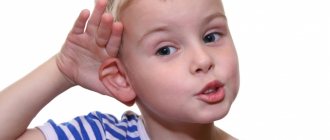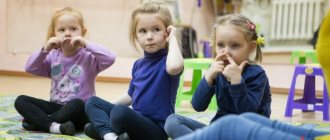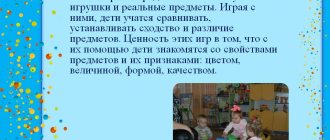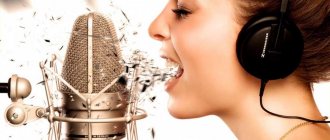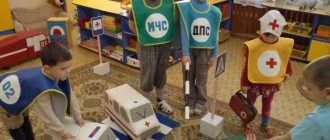To keep their children healthy, parents are ready to go to great lengths. Health improvement in sanatoriums, trips to the sea, sports clubs, walks in the fresh air - all this, of course, strengthens the baby’s immunity, but sometimes takes a lot of effort and time from parents.
We all understand that nowadays every minute counts and leaving the city with a child for a week is a rare opportunity. At the same time, if the child gets sick, the sick leave will cost the same week, but the time spent will be extremely regrettable.
Alternative methods of healing the body allow you to maintain the baby’s health and fit into the parents’ busy work schedule. For example, breathing exercises for children.
How does breathing exercises affect a child’s body?
Breathing exercises for children are mainly aimed at strengthening the body's respiratory system. During exercise, the respiratory muscles develop, and the habit of inhaling and exhaling correctly and rhythmically is developed.
Since exercises for young children are playful in nature and include pronouncing sounds, the functioning of the speech apparatus also improves. By improving the blood supply to the body, the child’s local immunity is enhanced.
Increasing immunity helps the baby more easily tolerate viral diseases or completely avoid them during periods of colds. The likelihood of serious respiratory diseases is reduced.
If the child is already sick or suffers from a chronic illness, such as asthma, then breathing exercises will help him recover faster from illness or endure attacks more easily.
Diaphragmatic breathing.
The most correct, expedient and convenient for speech is diaphragmatic breathing.
Diaphragmatic breathing is breathing in which inhalation and exhalation are performed with the participation of the diaphragm and intercostal muscles. The lower, most capacious part of the lungs is active. The upper parts of the chest, as well as the shoulders, remain practically motionless.
At this stage, we develop the sensation of movement of the respiratory organs, mainly the diaphragm and the anterior wall of the abdomen. The exercises are performed first in a lying position, then sitting and standing.
From a lying position:
"Fish" . Place the child on his back and place a light soft toy fish on his stomach. When you inhale through your nose, your stomach protrudes, which means that the toy standing on it rises. When exhaling through the mouth, the stomach retracts and the toy lowers.
Swinging a fish on the wave
Then up (inhale),
Then down (exhale)
She floats on me.
“Hippopotamus” - We say to the child: “Put your palm on your stomach and feel how your stomach rises when you inhale and falls when you exhale. Can be accompanied by a rhyme:
The hippos were lying
The hippos were breathing.
Then the tummy rises (inhale),
Then the tummy drops (exhale).
From a sitting position.
The child sits in front of a large mirror, places his palm on the diaphragm area and controls himself visually and tactilely.
"Hippos"
The hippos sat down,
We touched our bellies.
Then the tummy rises,
Then the tummy drops.
From a standing position.
Observation of children shows that some of them, when changing position, switch to the usual upper clavicular or upper costal type of breathing; their hand placed on the diaphragm area does not make movements. In this case, we place the child’s palm on the area of the diaphragm and invite him to “feel with his hand”, and also see how the “stomach” moves during the breathing process. Inhale calmly, shoulders do not rise.
How can children do breathing exercises correctly?
Up to the age of five, breathing exercises for children take more of a playful form and are combined with physical and vocal exercises. Children must do this kind of play gymnastics with their parents. This will ensure complete safety of classes, and will also allow mom and dad to spend more time with the baby.
It is recommended for children to engage in full breathing exercises from the age of five. At this age, the child begins to control his breathing and evaluate his well-being. But even at this age, he must do the exercises under the supervision of his parents. You can study independently only from the age of seven.
The rules for performing the exercises depend on which technique you choose. For example, in some techniques it is considered correct to breathe through the nose, in others - through the mouth. Be sure to check this point before starting classes.
In general, there is a small list of recommendations for doing breathing exercises with children:
- the child must be calm, not angry and not too playful;
- exercises should be performed at a calm pace so that the baby does not overdo it and you can always control his condition;
- during classes you should not take sharp exhalations;
- The baby's shoulders should remain calm.
Be sure to stop exercising if:
- the child is breathing rapidly, has suddenly turned pale or flushed;
- the baby complains that his arms or legs are numb;
- The child's hands began to tremble.
Before starting classes, ask your child to talk about how he is feeling and immediately warn him if he suddenly feels unwell.
Recommendations for performing breathing exercises
- Classes must be carried out in a well-ventilated area;
- All exercises should be performed before meals;
- Clothing should not hinder the baby's movements;
- The muscles of the child’s neck, shoulders, arms, chest and abdomen should be relaxed;
- Inhalation should occur through the nose;
- The exhalation should be long and smooth;
- Make sure that when performing breathing exercises, the child does not puff out his cheeks. At first, you can hold them with your palms;
- 3-5 repetitions of each exercise are enough, between which you should take a 2-3 second pause. The total duration of breathing exercises should not exceed 5 minutes.
It is very important to measure the amount of breathing exercises and perform them at a moderate pace to avoid hyperventilation.
Breathing exercises for children from two years old
- Bubbles
The baby takes a deep breath through his nose, inflates his “bubbly cheeks” and slowly exhales air through his slightly open mouth. Repeat 2 – 3 times.
- Pump
The child puts his hands on his belt, squats slightly - inhale, straightens up - exhale. Gradually the squats become lower, the inhalation and exhalation take longer. Repeat 3 – 4 times.
- Airplane
You recite a poem, and the baby performs movements in the rhythm of the verse:
Airplane - airplane (baby spreads his arms to the sides, palms up, raises his head and takes a breath) Takes flight (holds his breath) Zhu-zhu-zhu (makes a turn to the right) Zhu-zhu-zhu (exhales, says zh-zh-zh) I’ll stand and rest (stands up straight, lowering my arms) I’ll fly to the left (raises my head and takes a breath) Zhu-zhu-zhu (makes a turn to the left) Zhu-zhu-zhu (exhale, zh-zh-zh) I’ll stand and rest (stands up straight and gives up).
Repeat 2-3 times
- Mouse and bear
You recite a poem, and the baby performs movements in the rhythm of the verse:
The bear’s house is huge (the child straightens up, stands on his toes, raises his hands up, reaches for them, looks at his hands and takes a breath) The mouse’s is very small (sits down, clasps his knees with his hands, lowers his head, exhales while pronouncing the sound sh-sh -sh) The mouse goes to visit the bear (walks on his toes) He won’t get to her.
Repeat 3 – 4 times.
- Chickens
Parents perform the movements together with the baby. Stand up, bend over, hang your wings freely and lower your head. We say: “Tak-tak-tak” and at the same time pat our knees. Exhalation. Straighten up, raise your arms up - inhale. Repeat 5 times.
Card index of games for the development of speech breathing in preschool children
The source of the formation of speech sounds is an air stream leaving the lungs through the larynx, pharynx, oral cavity or nose to the outside. Correct speech breathing ensures normal sound production, creates conditions for maintaining normal speech volume, strictly observing pauses, maintaining fluency of speech and intonation expressiveness.
Speech breathing disorders can be a consequence of general weakness, adenoid growths, various cardiovascular diseases, etc.
Such imperfections in speech breathing, such as the inability to rationally use exhalation, speech while inhaling, incomplete renewal of air supply, etc., which negatively affect the development of children’s speech, may be due to improper upbringing and insufficient attention of adults to children’s speech. Children who have weakened inhalation and exhalation, as a rule, speak quietly and have difficulty pronouncing long phrases. If air is used irrationally, the fluency of speech is disrupted, since children are forced to take in air in the middle of a sentence. Often such children do not finish the words and often pronounce them in a whisper at the end of the phrase. Sometimes, in order to finish a long phrase, they are forced to speak while inhaling, causing speech to become unclear, convulsive, and choking. A shortened exhalation forces you to speak phrases at an accelerated pace, without observing logical pauses.
When starting to develop speech breathing in a child, it is necessary first of all to form a strong, smooth oral exhalation. At the same time, it is necessary to teach the child to control the exhalation time and use air sparingly. Additionally, the child develops the ability to direct the air stream in the desired direction.
During the games described in the article, constant monitoring of correct breathing is necessary.
Remember the parameters of correct oral exhalation:
- exhalation is preceded by a strong inhalation through the nose - “we take a full chest of air”;
- exhalation occurs smoothly, and not in jerks;
— during exhalation, the lips form a tube; you should not purse your lips or puff out your cheeks;
- during exhalation, the air comes out through the mouth, you should not allow the air to escape through the nose (if the child exhales through the nose, you can pinch his nostrils so that he feels how the air should come out);
- you should exhale until the air runs out;
— while singing or talking, you should not take in air with frequent short breaths.
When playing games aimed at developing a child's breathing, it is necessary to keep in mind that breathing exercises quickly tire the child and can even cause dizziness. Therefore, such games must be limited in time (you can use an hourglass) and be sure to alternate with other exercises.
The games and exercises listed below will help teach your child to smoothly exhale a strong, directed stream of air through his mouth.
Games and exercises for development
smooth oral exhalation
Fly, butterfly!
Target:
development of prolonged continuous oral exhalation; activation of the labial muscles.
Equipment
: 2-3 bright paper butterflies.
Progress of the game:
Before starting the lesson, tie a thread 20-40 cm long to each butterfly, attach the threads to the cord at some distance from each other. Pull the cord so that the butterflies hang at the level of the standing child’s face.
The teacher shows the child butterflies and invites them to play with them.
- Look how beautiful the colorful butterflies are! Let's see if they can fly. The teacher blows on butterflies.
- Look, they're flying! How alive! Now you try to blow. Which butterfly will fly farthest?
The child stands near the butterflies and blows on them. It is necessary to ensure that the child stands straight, does not raise his shoulders when exhaling, blows on one exhalation without taking in air, does not puff out his cheeks, and slightly pushes his lips forward.
You can blow for no more than 10 seconds with pauses to avoid dizziness.
Breeze
Target:
development of strong smooth oral exhalation; activation of the labial muscles.
Equipment:
paper plumes (brooms).
Progress of the game:
Before starting the game, you need to prepare the brooms. To do this, attach strips of colored paper to a wooden stick. You can use thin tissue paper or a “rain” Christmas tree decoration.
The teacher offers to play with a broom. Shows how to blow on paper strips, then offers to blow on the child.
- Imagine that this is a magic tree. The breeze blew and the leaves rustled on the tree! Like this! Now you blow!
The game can be played individually or in a group of children. In the second case, children blow on their brooms at the same time.
Autumn leaves
Target:
teaching smooth free exhalation; activation of the labial muscles.
Equipment:
autumn maple leaves, vase.
Progress of the game:
Before class, collect a bouquet of autumn leaves with your child (preferably maple, since they have long stems) and place them in a vase. Offer to blow on the leaves.
— You and I collected beautiful leaves in the park. Here is a yellow leaf, and here is a red one. Do you remember how the leaves rustled on the branches? Let's blow on the leaves!
An adult, together with a child or a group of children, blows on the leaves in a vase and draws their attention to the rustling sound the leaves make.
Leaf fall
Target:
teaching smooth free exhalation; activation of the labial muscles.
Equipment:
yellow, red, orange leaves cut out of thin double-sided colored paper; bucket.
Progress of the game:
The teacher lays out leaves on the table and reminds the children about autumn.
- Imagine that it is autumn now. Red, yellow, orange leaves fall from the trees. The wind blew and scattered all the leaves on the ground! Let's make a wind - let's blow on the leaves!
The adult and the children blow on the leaves until all the leaves are on the floor. In this case, it is necessary to ensure that oral exhalation is carried out correctly, as well as to ensure that children do not become overtired.
- All the leaves on the ground... Let's collect the leaves in a bucket.
The teacher and children collect leaves. Then the game repeats again.
It is snowing!
Target:
formation of a smooth long exhalation; activation of the labial muscles.
Equipment:
pieces of cotton wool.
Progress of the game:
The teacher lays out pieces of cotton wool on the table and reminds the children about winter.
— Imagine that it is winter now. Snow is falling outside. Let's blow on snowflakes!
An adult shows how to blow on cotton wool, the children repeat. Then everyone raises the cotton wool and the game is repeated again.
Dandelion
Target:
development of smooth, long exhalation through the mouth; activation of the labial muscles.
Progress of the game:
The game is played outdoors - in a clearing where dandelions grow. The adult invites the children to find among the yellow dandelions the ones that have already bloomed and pick them. Then he shows how you can blow on a dandelion to make all the fluff fly off. After this, he invites the children to blow on their dandelions.
- Let's blow on the dandelions! Blow once, but strongly, so that all the fluff flies off. Look, the fluffs are flying like little parachutes.
You can arrange a competition: each child blows on his own dandelion once. The winners are those children who do not have a single fluff left on the head of the flower.
You can also organize the game “Grandfather or Grandmother?”:
- Let's play the game “Grandfather or Grandmother?”! Blow on your dandelions only once. If there are no fluffs left on the flower head, it is a bald head. So it turned out to be a grandfather. If the fluff remains - these are hairs on the head - then it turns out to be a woman. The one who gets the grandfather wins!
Pinwheel
Target:
development of long, smooth exhalation; activation of the labial muscles.
Equipment:
spinning toy.
Progress of the game:
Before starting the game, prepare a spinning toy. You can make it yourself using paper and a wooden stick.
Show your child the fidget spinner. On the street, demonstrate how it begins to spin when the wind blows. Then offer to blow on it yourself:
- Let's make a wind - let's blow on the turntable. That's how it turned out! Blow even harder and the spinner spins faster.
The game can be played individually or in a group of children.
Wind Song
Target:
development of strong smooth exhalation; activation of the labial muscles.
Equipment:
Chinese bell "song of the wind".
Progress of the game:
Hang the bell at a convenient distance for the child (at the level of the face of a standing child) and offer to blow on it. Pay attention to how melodic the sound is. Then suggest blowing harder - the sound has become louder.
The game can be played individually or in a group of children.
Fly, birds
!
Target:
development of long-term directed smooth oral exhalation; activation of the labial muscles.
Equipment:
2-3 colorful birds folded from paper (origami).
Progress of the game:
The child is sitting at the table. One bird is placed on the table opposite the child. The teacher invites the child to blow on the bird so that it flies as far as possible (you can blow once).
- What a beautiful bird you have! Can she fly? Blow so that the bird flies far away! You can blow once. Inhale and get more air. The bird has flown!
During a group game, you can arrange a competition between two or three children: each blows on his own bird. The one whose bird flies farthest wins. The adult makes sure that the children do not puff out their cheeks, blow only once, and do not strain too much.
Roll, pencil!
Target:
development of long, smooth exhalation; activation of the labial muscles.
Equipment:
pencils with a smooth or ribbed surface.
Progress of the game:
The child is sitting at the table. Place a pencil on the table at a distance of 20 cm from the child. First, the adult shows how to blow forcefully on a pencil so that it rolls to the opposite end of the table. Then he invites the child to blow on the pencil. The second participant in the game catches the pencil at the opposite end of the table. You can continue the game by sitting opposite each other and rolling each other's pencil from one end of the table to the other.
When organizing a game in a group, you can arrange a competition: two children sit at a table with pencils in front of them. You can only blow on the pencil once. The one whose pencil rolls farthest wins.
Funny balls
Target:
development of strong smooth directed exhalation; activation of the labial muscles.
Equipment:
lightweight plastic ball.
Progress of the game:
You can play with balls in the same way as with pencils (see previous game). You can make the game more difficult. Draw a line on the table. Then take the ball and place it in the middle of the table (on the line). Two children sit at a table opposite each other, on opposite sides of a ball on a line.
- You need to blow on the ball so that it rolls to the opposite side of the table. And you need to try so that the ball does not fall on your part of the table. You need to blow harder. Let's start!
The winner is the one who managed to blow the ball over the line to the opposite side of the table.
Balloon
Target:
development of strong smooth oral exhalation; activation of the labial muscles.
Equipment:
an ordinary balloon on a string; gas balloon.
Progress of the game:
Hang the balloon at the level of your child's face. Blow on the balloon so that it flies high, then offer to blow on the child.
A more complex version of the game is possible. Throw the balloon up. Invite your child to blow on the ball several times so that it does not fall to the floor longer.
- Let's blow on the ball so it doesn't fall down. Like this! Stronger!
You can play with a balloon filled with gas. In this case, the ball is tied to a chair or something on the floor (it is advisable that the string remains long). You need to blow on the ball so that it flies as far forward as possible.
If the game is played in a group, you can organize a competition: two children (or small teams) stand opposite each other facing the ball (distance to the ball is 50-60 cm) and simultaneously begin to blow. The winner is the one who managed to send the ball to the opposite territory (you can divide the territory using a ribbon or rope).
Sail, little boat!
Target:
development of strong smooth directed exhalation; activation of the labial muscles.
Equipment:
paper or plastic boats; bowl of water.
Progress of the game:
Place a bowl of water with a paper boat floating in it on a low table. At first, it is better to use a plastic boat, as paper boats quickly get wet and sink. An adult blows on the boat, then offers to blow on the child.
- Imagine that this is the sea. Let's set the boat sailing. Look how strong the wind is! How quickly our ship sailed. Now try it. Well done!
The game can be complicated by inviting the child to ride a boat from one city to another, marking the cities with icons on the edges of the pelvis. In this case, the air stream during oral exhalation should not only be strong, but also directed.
You can play the game in a group. In this case, organize a competition to see whose boat will sail to the goal faster.
Ducks
Target:
development of strong smooth directed exhalation; activation of the labial muscles.
Equipment:
rubber duck with ducklings (bathing set); other lightweight rubber or plastic toys that float in water.
Progress of the game:
Place a bowl of water on a low table. The teacher shows the child a duck with ducklings and invites them to play.
- Imagine that this is a lake. A duck and ducklings came to the lake. This is how a duck swims.
An adult blows on toys and offers to blow on the child. Then the game gets more difficult.
- Look: the ducklings have swam far from their mother. The duck calls the ducklings to come to her. Let's help the ducklings swim to their mother duck as quickly as possible!
In this case, the air stream during oral exhalation should not only be strong, but also directed. You can play the game in a group of children.
Bulki
Target:
development of strong oral exhalation; learning how to blow through a straw; activation of the labial muscles.
Equipment:
glass of water, cocktail straws of different diameters.
Progress of the game:
Place a cocktail straw in a glass half filled with water and blow into it - bubbles will rise to the surface with a loud gurgle. Then give the tube to the child and ask him to blow.
- Let's make funny buns! Take a straw and blow into a glass of water. If you blow weakly, you get small gurgles. And if you blow too hard, you get a whole storm! Let's create a storm!
By looking at the “storm” in the water, you can easily estimate the strength of the exhalation and its duration. At the beginning of classes, the diameter of the tube should be 5-6 mm, later you can use thinner tubes.
Many children who are accustomed to drinking juice from bags through a straw do not immediately understand what is required of them and may start drinking water (therefore, it is better to use purified drinking water just in case). In this case, first suggest blowing through the tube onto a piece of cotton wool on the table or onto your palm to feel the air coming out of the tube.
Another possible problem is that the child may bite and chew on the soft tube or bend it. In this case, you can use the body of a gel pen - a transparent tube made of hard plastic.
In addition, the child can, holding the tube in his lips, exhale air through his nose. In this case, you should gently pinch the baby’s nose with your fingers and offer to blow again.
Grow, foam!
Target:
development of strong oral exhalation; activation of the labial muscles.
Equipment:
a glass of water, cocktail straws of different diameters, dishwashing liquid.
Progress of the game:
This game can be offered to a child after he learns to blow well through a straw into a glass of water (does not drink water, does not bend the straw). Add a little dishwashing liquid to the water, then take a straw and blow into the water - with a loud gurgle, a cloud of iridescent bubbles will grow before the child's eyes. Then offer to blow on the child. When there is a lot of foam, you can blow on it.
- Now I'm going to do hocus pocus! I take the dishwashing liquid and drop it into the water... Now I’ll stir it - ary-bar-top-top-top! I take a pipe and blow. Look what happened! This is a foam of small and large bubbles! Now you try to blow.
After children learn to act correctly in individual lessons - blowing into straws, not spilling water, etc., you can conduct such a lesson in a group.
Birthday
Target:
development of strong, long, smooth oral exhalation; activation of the labial muscles.
Equipment:
marshmallows in chocolate or marshmallows; small cake candles; Teddy bear.
Progress of the game:
Make chocolate-covered marshmallows or marshmallows and stick one or more holiday candles - today is “bear’s birthday.” Together with your child, set the table using toy dishes, invite guests - a bunny and a doll, and sing a song for the bear. Then ceremoniously bring in the “birthday cake” with a lit candle.
-It’s the bear’s birthday today. He is one (or more) years old. Let's congratulate the bear! Here's a birthday cake - help the bear blow out the candles.
When the child blows out the candle, make sure that the exhalation is long, strong and smooth. Explain to the baby that he has several attempts, in each of which he can only blow once. If the candle does not go out, we take air into the chest again and try again.
Many children, when exhaling correctly, cannot correctly direct the stream of exhaled air - it passes by the candle flame. In this case, it is useful for clarity to suggest blowing into a pipe made of a sheet of thick paper (diameter 3-4 cm), because Using the pipe, you can control the direction of the exhaled air.
First, place the candle at a distance of about 30 cm from the child. Gradually, the distance from the child to the candle can be increased to 40-50 cm. Explain to the child that you should not move too close to the candle.
For subsequent games with blowing out the flame, select candles with a stable base or standing on a reliable candlestick.
You can come up with a different plot for the game or simply offer to blow out the flame.
For safety reasons, this game is played individually.
It is necessary to warn the child that the candle should not be touched or knocked over. Feather, fly!
Target:
development of strong smooth directed exhalation; activation of the labial muscles.
Equipment:
bird feather.
Progress of the game:
Throw the feather up and blow on it, preventing it from falling down. Then offer to blow on the child. Pay his attention to the fact that you need to blow hard, directing the stream of air towards the feather from bottom to top.
Bubble
Target:
development of strong smooth exhalation; activation of the labial muscles.
Equipment:
a bottle with soap solution, a frame for blowing bubbles, straws of various diameters - cocktail, thick paper, a plastic bottle with a cut off bottom.
Progress of the game:
Play with your child with soap bubbles: first, the teacher blows bubbles, and the child watches and catches them. Then encourage your child to blow the bubbles themselves. It should be noted that blowing soap bubbles is often a rather difficult task for children. Try to help your child - select different frames and tubes so that the child can try and choose which is easier to achieve the result. You can make your own liquid for soap bubbles: add a little dishwashing liquid and sugar to water.
Do not forget to monitor the safety of the child - do not allow him to try or drink the liquid.
Whistles
Target:
development of strong smooth exhalation; activation of the labial muscles.
Equipment:
children's ceramic, wooden or plastic whistles in the shape of various birds and animals.
Progress of the game:
Before starting the lesson, you should prepare the whistles. Give the children whistles and invite them to blow on them.
- Look how beautiful your whistle toys are! Masha has a bird, and Vanya has a deer. Let's have a forest concert - each of the animals and birds sings their own song!
The game can be repeated several times. The game can be played individually or in a group of children.
Make sure that children blow without straining or overtiring.
Policeman
Target:
development of strong smooth exhalation; activation of the labial muscles.
Equipment:
whistles.
Progress of the game:
Before starting the lesson, you should select whistles and choose those that are easier to blow. Hand out whistles to the children and invite them to play police officers.
- Who knows what a real policeman has? A pistol, a baton and, of course, a whistle. Here are the whistles - let's play policemen! When a policeman sees an intruder, we blow the whistle!
The game can be repeated several times. The game can be played individually or in a group of children.
Make sure that children blow without straining and do not become overtired.
Blow the pipe!
Target:
development of strong smooth exhalation; activation of the labial muscles.
Equipment:
various wind musical instruments: pipes, pipes, horns, harmonicas.
Progress of the game:
Before starting the lesson, you should select the tools. Remember that playing wind instruments is one of the most difficult exercises for developing breathing. Therefore, check the instruments in advance and choose those that are easier to play.
Give the children pipes and invite them to play them, first one by one, then everyone together.
- Let's have a musical parade! Grab your pipes and let's start playing!
If one of the children is unable to extract a sound from the pipe, make sure that he is blowing correctly: the exhalation through the mouth should be strong and fall exactly into the bell of the pipe, for which it must be pressed tightly with the lips: the air should not escape through the nose.
You can also offer pipes, horns, and harmonicas for playing. The game can be played individually or in a group of children. If one of the children does not succeed, do not insist. It may be better to return to this task later, when the child is a little older.
Music bubble
Target:
development of strong smooth exhalation; activation of the labial muscles.
Equipment:
clean glass vial (vial height about 7 cm, neck diameter 1-1.5 cm).
Progress of the game:
The teacher shows the children a bottle and offers a game.
- How do you figure out what it is? That's right, a bubble. What can you do with the bubble? Pour water into it. Pour vitamins into the bottle. What else? Do not know! Now I'll show you a trick! This is a musical bubble that sounds like a trumpet.
The teacher brings the bottle to his lips, blows into the neck, extracting a sound from it. Then he invites one of the children to blow into another bottle. It should be remembered: for the bubble to buzz, the lower lip must lightly touch the edge of its neck. The air stream must be strong. You should blow for several seconds without straining. Since the game requires the use of glass bubbles, for safety reasons the game is played individually, or during a group lesson, children blow into the bubbles in turns. If one of the children does not succeed in this task, do not insist. It may be better to return to it later, when the child is a little older.
Blow up the toy!
Target:
development of strong smooth exhalation; activation of the labial muscles.
Equipment:
various small inflatable toys; Balloons.
Progress of the game:
The teacher hands out well-washed rubber inflatable toys to the children and offers to inflate them. You should blow by taking in air through your nose and slowly exhaling it through your mouth into the hole of the toy.
- Look, our toys are very sick - thin, without bellies... How can we play with them? Let's inflate the toys so that they become plump, healthy and cheerful again!
Whoever inflates the toy can play with it.
This task requires a formed strong exhalation. In addition, it is necessary to teach children how to hold toys correctly so that air does not escape from them. Offer this game only after a strong, smooth exhalation has already been formed.
In subsequent lessons, you can offer to inflate balloons, which is even more difficult. If the child can’t do it, don’t insist.
Paper flag
Target:
development of strong smooth continuous exhalation; activation of the labial muscles.
Equipment:
strips of thin colored paper (size: 15x2.5 cm).
Progress of the game:
Before starting the lesson, prepare strips of paper. Show children how to blow on the strip by holding it against their lower lip (holding the strip with their thumb and forefinger).
- Let's turn paper strips into real flags. To do this you need to make wind - like this! The flags flutter in the wind!
This is not an easy exercise; children do not get it right away. It may be better to return to it later, when the child is a little older. The game can be played individually or in a group of children.
Breathing exercises for children 4-5 years old
For children 4-5 years old, breathing exercises become a little more complex and more conscious. During classes, the child learns to perceive his breathing and control it.
- "Let's listen to our breathing"
Goal: to teach children to listen to their breathing, determine its depth and the state of the body.
Starting position: standing, sitting, lying down - any comfortable position. The muscles are relaxed.
In complete silence, children listen to their own breathing and determine:
- where the air stream enters and where it comes out;
- what part of the body moves when inhaling and exhaling (stomach, chest, shoulders or all parts - wave-like);
- what type of breathing: shallow (light) or deep;
- what is the breathing frequency: inhalation and exhalation occur frequently or calmly at a certain interval (automatic pause); quiet, inaudible breathing or noisy breathing.
It is important not only to conduct the exercise with the child, but also to explain to him the meaning of certain indicators.
- “We breathe quietly, calmly and smoothly”
Goal: to teach children to relax and restore the body after physical activity and emotional excitement; regulate the breathing process and concentrate attention on it.
Starting position: standing, sitting, lying down - any comfortable position. If you are sitting with your back straight, it is better to close your eyes.
The child takes a slow breath through the nose. When the chest begins to expand, you need to stop inhaling, take a short pause and exhale smoothly through the nose. Repeat 5-10 times.
The exercise is performed silently, smoothly, so that even a palm placed to the nose does not feel the stream of air when exhaling.
- “Balloon” (Breathing with the belly, lower breathing)
Goal: to teach children to strengthen the muscles of the abdominal organs, ventilate the lower part of the lungs, and concentrate on lower breathing.
Starting position: lying on your back, legs freely extended, torso relaxed, eyes closed. Place both palms on the navel.
- Exhale calmly, drawing the stomach towards the spinal column, the navel seems to lower.
- Slow, smooth inhalation, without any effort - the stomach slowly rises up and swells like a round ball.
- Slow, smooth exhalation - the stomach slowly retracts towards the back.
Repeat 4-10 times.
- “Balloon in the chest” (medium, costal breathing)
Goal: to teach children to strengthen the intercostal muscles, concentrate their attention on their movement, ventilating the middle sections of the lungs.
Starting position: lying, sitting, standing. Place your hands on the lower part of the ribs and concentrate on them.
- Exhale slowly, evenly, squeezing the ribs of the chest with your hands.
- Slowly inhale through your nose, your hands feel the expansion of your chest and slowly release the clamp.
- As you exhale, the chest is again slowly pressed with both hands at the bottom of the ribs.
Repeat 6-10 times.
Note. The abdominal and shoulder muscles remain motionless. In the initial phase of training, it is necessary to help children slightly compress and unclench the lower part of the ribs of the chest as they exhale and inhale.
Nasal breathing.
It is imperative to breathe through your nose; the habit of breathing through your mouth has a very harmful effect on human health. Yogis believe that breathing through the mouth is as unnatural as eating through the nose. They claim that children who breathe through their mouths are retarded in their mental development. Nasal breathing protects the throat and lungs from cold air and dust, ventilates the lungs and middle ear cavity well, and has a beneficial effect on the blood vessels of the brain. In addition, such gymnastics significantly increases the strength of the protective mechanisms that protect the brain from insufficient blood supply. It is necessary to breathe through the nose both in everyday life and when performing breathing exercises.
The purpose of these exercises: the child should learn to feel the difference in the direction of the air stream.
Forming smooth exhalations through the nose or mouth and alternating them.
Exercises:
- open your mouth wide and breathe calmly through your nose;
- close one nostril with your finger - exhale smoothly and inhale through the free nostril. Alternately close the left and then the right;
- inhale through slightly closed lips, exhale smoothly through the nose;
- inhale with your mouth wide open, exhale smoothly through your nose (do not close your mouth);
- inhale through the nose, exhale smoothly through the mouth (mouth wide open, tongue on the lower teeth - like warming your hands);
- inhale through your nose, exhale smoothly through loosely closed lips;
- inhale through the nose, exhale smoothly through the corners of the mouth, first through the right, then through the left.
Formation of jerky exhalations through the nose or mouth and their alternations.
Exercises:
- inhale through the nose, exhale through the nose in bursts;
- inhale through the nose, exhale through loosely closed lips jerkily, intermittently, taking short intervals;
- the mouth is wide open, stick out the tongue, inhale and exhale through the mouth jerkily, intermittently (like a dog breathing);
- inhale with your mouth wide open, exhale jerkily through your nose (do not close your mouth);
- inhale through the nose, exhale jerkily through the corners of the mouth, first through the right, then through the left.
Formation of the ability to combine smooth and jerky exhalations.
Exercises:
- inhale through the nose, elongated exhalation with intensification at the end;
- inhale through the nose, jerky exhalation, at the end turning into a smooth exhalation;
- the lips are extended forward like a tube. Inhale through the nose, exhale jerkily through the mouth, finally turning into a smooth exhalation;
- inhale through slightly closed lips, elongated exhale through the nose with intensification at the end;
- inhale through slightly closed lips, jerky exhalation also through the mouth, at the end turning into a smooth exhalation;
- lips in a smile, inhale through the nose, elongated exhale through the mouth;
- lips in a smile, inhale through the nose, jerky exhale through the mouth, at the end turning into a smooth exhalation.
Each exercise is performed 8 times, after a 3-5 second break it is recommended to move on to the next one. The total duration of gymnastics is 5-6 minutes.
Breathing exercises for children from 5 years old (methodology by A.N. Strelnikova)
- "Warm-up."
Starting position: standing, feet shoulder-width apart, torso straight, arms half bent at the elbows, fingers slightly clenched into fists, turned towards each other.
Sit down, cross your arms towards each other, inhale through your nose - active, fast, clearly audible. Return to starting position. Relax. Do not think about exhalation, do not control it with your consciousness. Repeat the exercise eight times in a row without pauses. The pace is 1-2 breaths per second, move strictly rhythmically. Repeat 10-20 times.
- "Tilts." Part one
Starting position: standing, feet shoulder-width apart, torso straight, arms down (“at your sides”).
Lean forward, lower your arms at will, slightly crossing them, inhale through your nose - quickly, clearly audible. Return to the starting position not completely - and inhale again while bending forward. Don’t think about exhalation, don’t interfere, but don’t help it either. Repeat 8 times, tempo – 1-2 breaths per second, bend strictly rhythmically. Repeat 10-20 times.
- "Tilts." Part two.
Starting position: standing, feet shoulder-width apart, torso straight, arms at shoulder level, elbows bent, fingers slightly clenched into fists, turned towards each other. Lean back, sharply cross your arms in front of your chest; inhalation through the nose is fast, active, clearly audible, but not noisy. Return to the starting position not completely - and inhale again while bending back. Repeat 8 times, tempo – 1-2 breaths per second, rhythmic movements. Repeat 10-20 times.
- "Pendulum"
Starting position: standing, leaning forward, arms down.
Rock back and forth. When you lean forward and inhale, your arms are crossed. Inhale through the nose, fast, active, clearly audible (but it should not be deliberately noisy). Rate 1-2 breaths per second. Repeat 10-20 times.
Perform these exercises with a short inhalation: do not try to take in as much air as possible, but on the contrary, inhale in volume less than possible. Be sure not to assist the exhalation. Do not move your hands far from your body.
Exercises to develop the strength and duration of exhalation
- Breeze. Tie several ribbons of serpentine or Christmas tree rain to a thread or lace. Invite your baby to blow on them and create a breeze. You can make the task more difficult by asking them to blow on ribbons of a certain color. The distance between the face and the ribbons should be approximately 10-15 cm.
- Leaf fall. Cut out real autumn leaves from paper or collect them from the street. Together with your child, you can arrange a real leaf fall by blowing them off the table. In the winter season, you can also play with paper snowflakes.
- Fly, feather! Let the baby throw the feather up and blow on it from bottom to top, not letting it fall.
- Pencil athletes. Draw start and finish lines on the table. At the start, put two pencils of different colors. Take turns blowing with your child on his own pencil and arrange a competition to see which of them will “run” to the finish line first.
- Sailors. Make boats out of paper or cork and lower them into a basin of water. There is a strong wind at sea - we blow on the ships, forcing them to move.
- Blow out the candles. You can role-play a birthday situation with your child. Prepare a toy set, cake and real candles. By blowing out the candles, you can make a wish.
- Pinwheel. A fidget toy is great for creating proper exhalation. Children love to watch the rotating blades and are proud of the result of their efforts.
- Whistles with the sounds of various animals and birds will also delight the baby and will be very useful for the development of his speech breathing.
- Another simple way to practice breathing is using soap bubbles.
Make sure that the child makes smooth and long exhalations. Gradually make the exercises more difficult by increasing the distance between your face and the object being deflated.
Content
- The benefits of breathing exercises for preschool children
- Working on breathing: exercises for children
- Exercise "Balloon"
- Exercise “Underwater World”
- Exercise "Puff"
- Exercise “Hippopotamus”
- Exercise "Breathes"
- Exercise "Chicken"
- Breathing exercises for children: additional recommendations
Working on breathing: exercises for children
In any sport, breathing exercises are basic.
Not a single physical education lesson in a preschool institution is complete without breathing exercises. After all, regular exercise improves immunity and reduces the frequency of colds.
Below you will find exercises for preschoolers that will help develop the speech apparatus and full deep breathing. All exercises are built in the form of a game, so kids usually do them with pleasure. You can easily do them at home yourself.
